9 of the best things to do in Tunisia
How to best explore this impressive part of nothern Africa, whether you want to visit ancient Roman ruins, explore stretches of the Sahara or simply relax on the beach

It’s easy to see why Tunisia is a popular holiday destination. It offers brilliant value for money, is rich in history and culture, and is a short flight from Europe. Lapped by the Mediterranean Sea, it’s a great option for those in search of sun and sand, just as tempting as some better known spots in Spain, Italy and Greece.
Sparkling waters meet the towering Atlas Mountains and the vast plains of the Sahara, a taste of Tunisia’s many remarkable landscapes. Historic sites and settlements range from attractive coastal towns to ancient cities, together telling a story spanning thousands of years.
Many of the country’s best things to see lie away from the traditional tourist destinations. Our guide will take you across salt lakes, oases and through cities, touching on some famous film locations, too. Here are the best things to do on a holiday in Tunisia.
Visit the capital
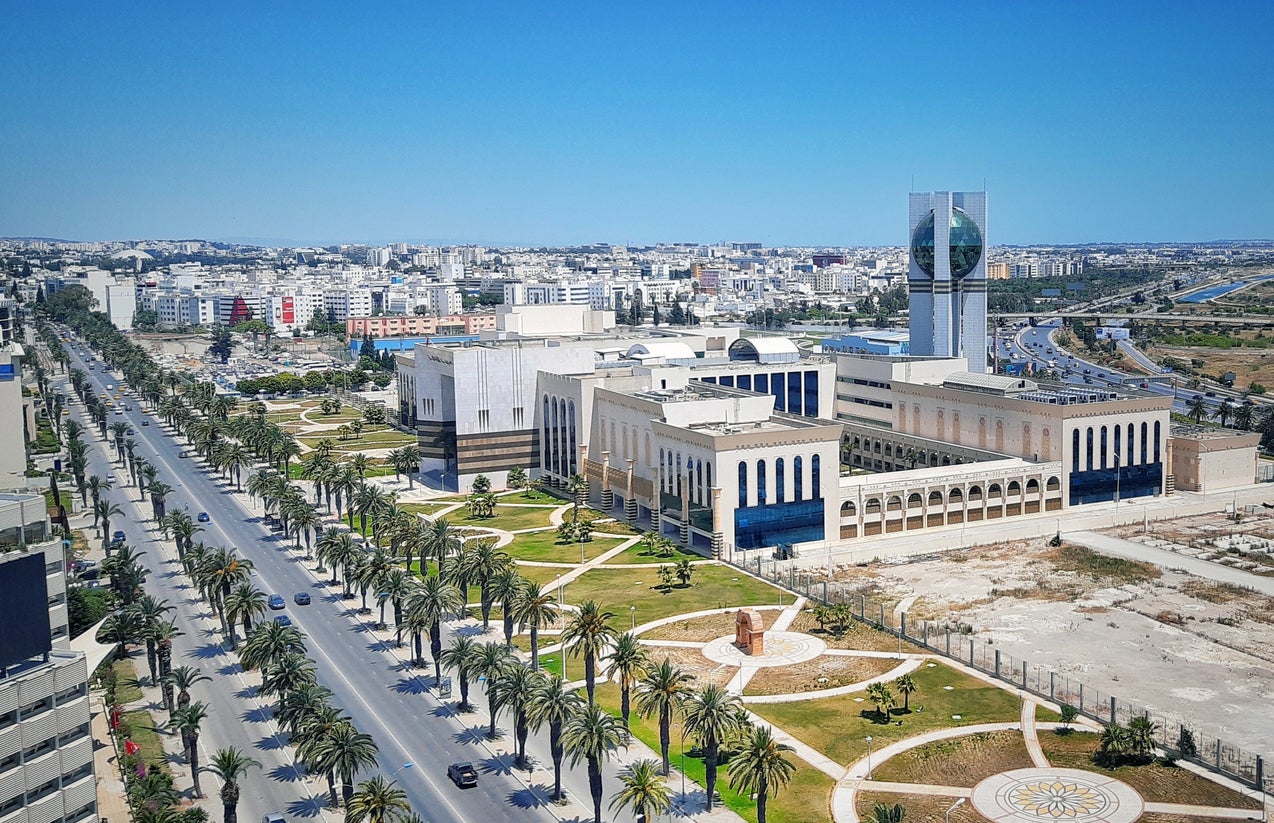
The main attraction in Tunis is its enchanting medina district, where remnants of the city’s 12th-century past are visible while walking the narrow ancient streets, lined with souks and dotted with the tall minarets of various mosques. There are over a dozen notable souks in the city, and some of the best branch off from the famed Al-Zaytouna mosque, such as El Attarine, El Berka and Ech-Chaouachine. Some date back to the 13th century, and you’ll find a range of goods, from perfume and cosmetics to clothing, textiles and jewellery.
Outside the medina, newer city streets hide their own array of monuments and attractions, such as the Royal Mausoleum of Tourbet el Bey and the Bab El Bhar, the gate separating the medina and the new city. The Bardo Museum is the most impressive in the country, and visitors will find collections dating back 40,000 years that highlight Roman, Greek and Arabian artefacts. Elsewhere, the National Military Museum traces back hundreds of years of Tunisian history through the lens of various wars and battles.
Read more on North Africa and Middle East travel:
Admire the beauty of Sidi Bou Said
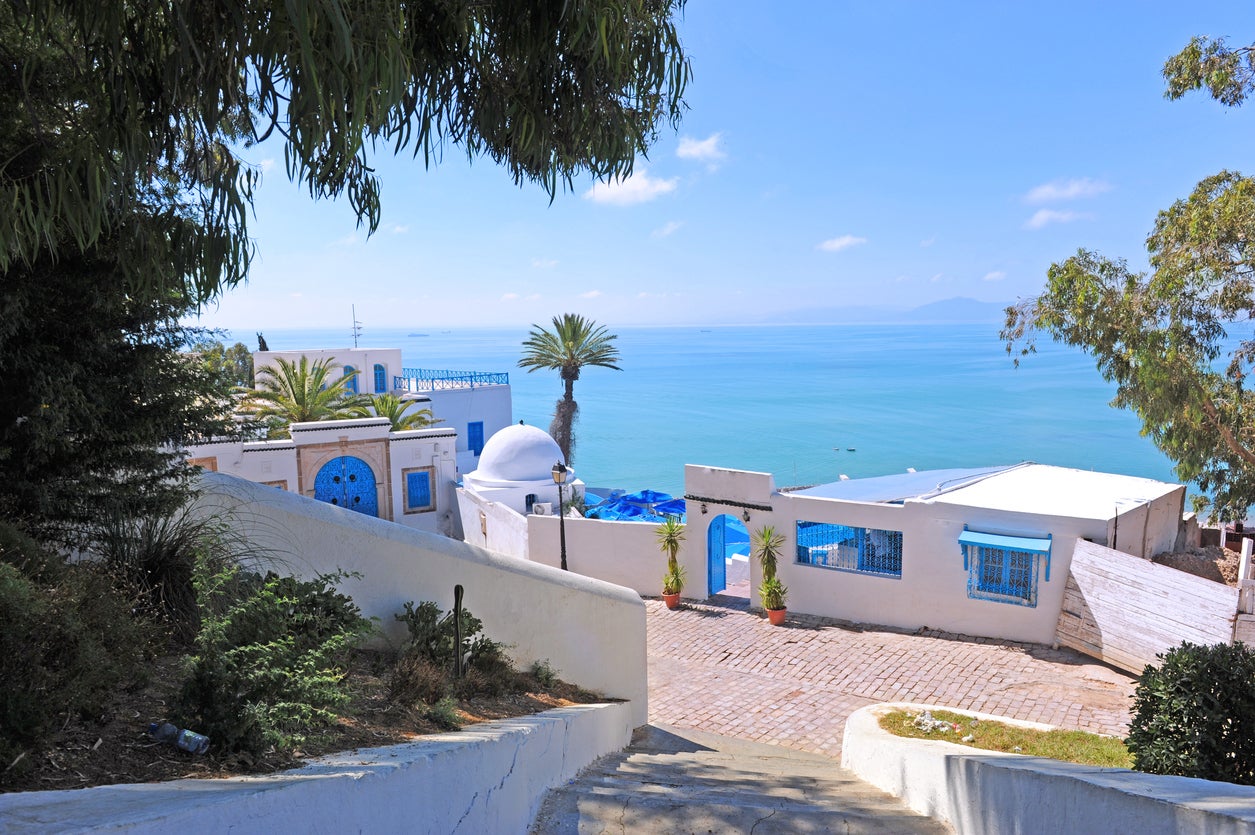
Just 20 minutes away from the capital, Sidi Bou Said is a pretty town on the coast. A mix of Ottoman and Andalusian architecture creates a sea of white-washed buildings decorated with blue domes, akin to those found on Greek islands and every bit as striking. This small town has a harbour and beach area, and on the hilltops there are regular glimpses of the Gulf of Tunis as you wonder the cobbled streets – this is a great place to visit for a relaxing day trip.
Within its winding streets visitors will find a series of art galleries focused on local work (the Galeri A Gorgi and the Selma Feriani gallery are the most celebrated) and historic residences turned into museums, such as the Dar El Annab and Ennejma Ezzahra, the latter featuring a renowned collection of musical instruments.
Head for the coast
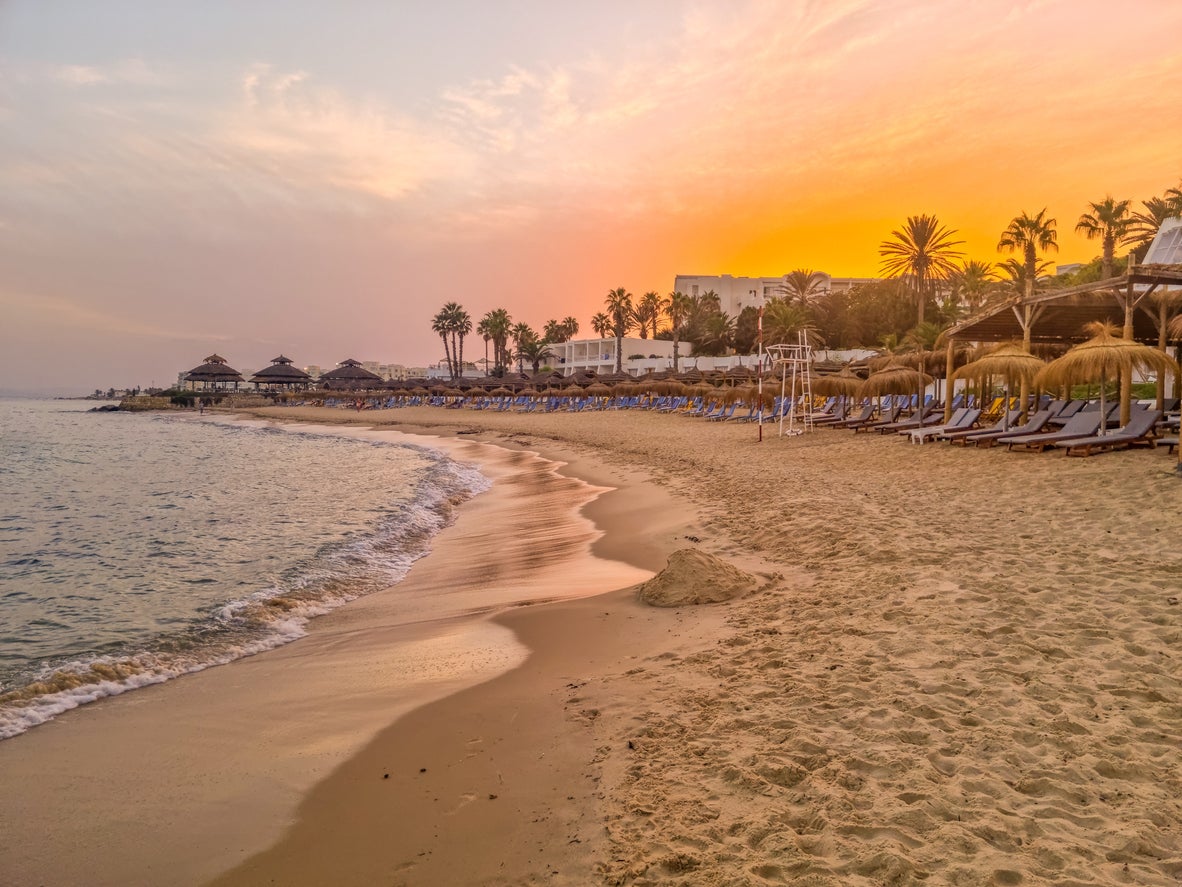
Hammamet is Tunisia’s original beach resort, just an hour south of Tunis. Ideal for a relaxing holiday, it is a town surrounded by 13th-century walls and filled with low-lying white buildings. The narrow alleys of the medina find their way to the shore, where they’ll find the miles of fine white sands and turquoise waters that have made the town so famous. Plenty of water sports are on offer, but much of the popularity is due to the calm and shallow waters, great for swimming and snorkelling.
Just over an hour south from Hammamet lies Sousse, a resort that is especially popular with Europeans, offering an attractive waterfront and a dose of lively nightlife alongside a Unesco-listed medina, an 8th-century coastal fort (called a ribat) and the shopping areas of Souq Er Ribba and El Kayed. Monastir sits another 30 minutes away, and though its golden sands and crystalline waters are a good option for a day at the beach, this quieter town is equally known for its historic sites, including the imposing, fortress-like Great Mosque, its own ribat and the vast Mausoleum of Habib Bourguiba, where the first president of independent Tunisia is buried.
See the Sahara
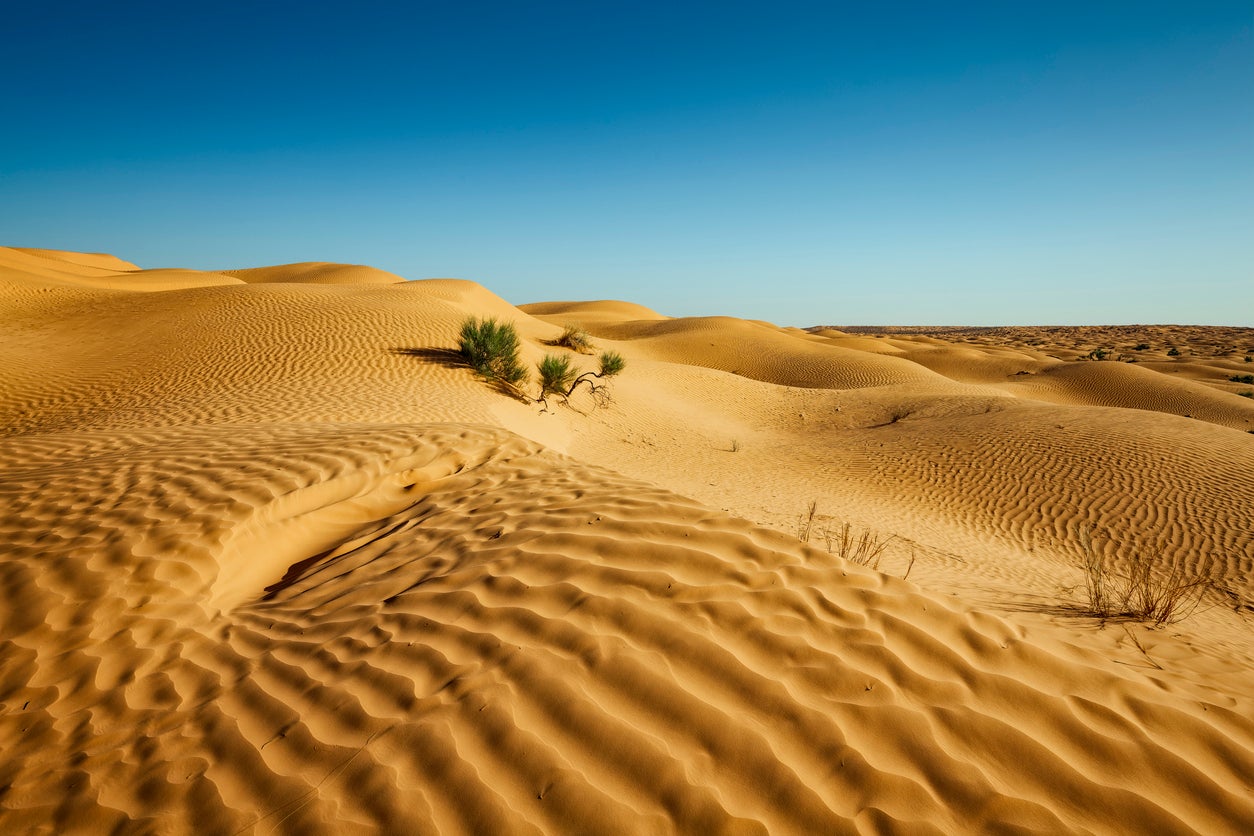
Though the country is well-known as a coastal winter sun destination, the southern portion is home to a section of the Sahara desert, an equally as striking yet far less explored natural frontier. The Tunisian section is dominated by the Grand Erg Oriental, a large expanse of dunes that stretches around 370 miles into Algeria and reaches almost 300 metres high in some areas.
The town of Douz is the gateway to the Sahara, where many knowledgeable, professional tour guides offer trips on dune buggies, 4X4s and camels, ranging from short tours to overnight stays that take you far into the dunes. Some will take you into the Jebil National Park (designated to protect the Dorcas gazelle and addax) and the Ksar Ghilane oasis, and many offer the chance to camp overnight in traditional Berber tents.
Discover Roman remains
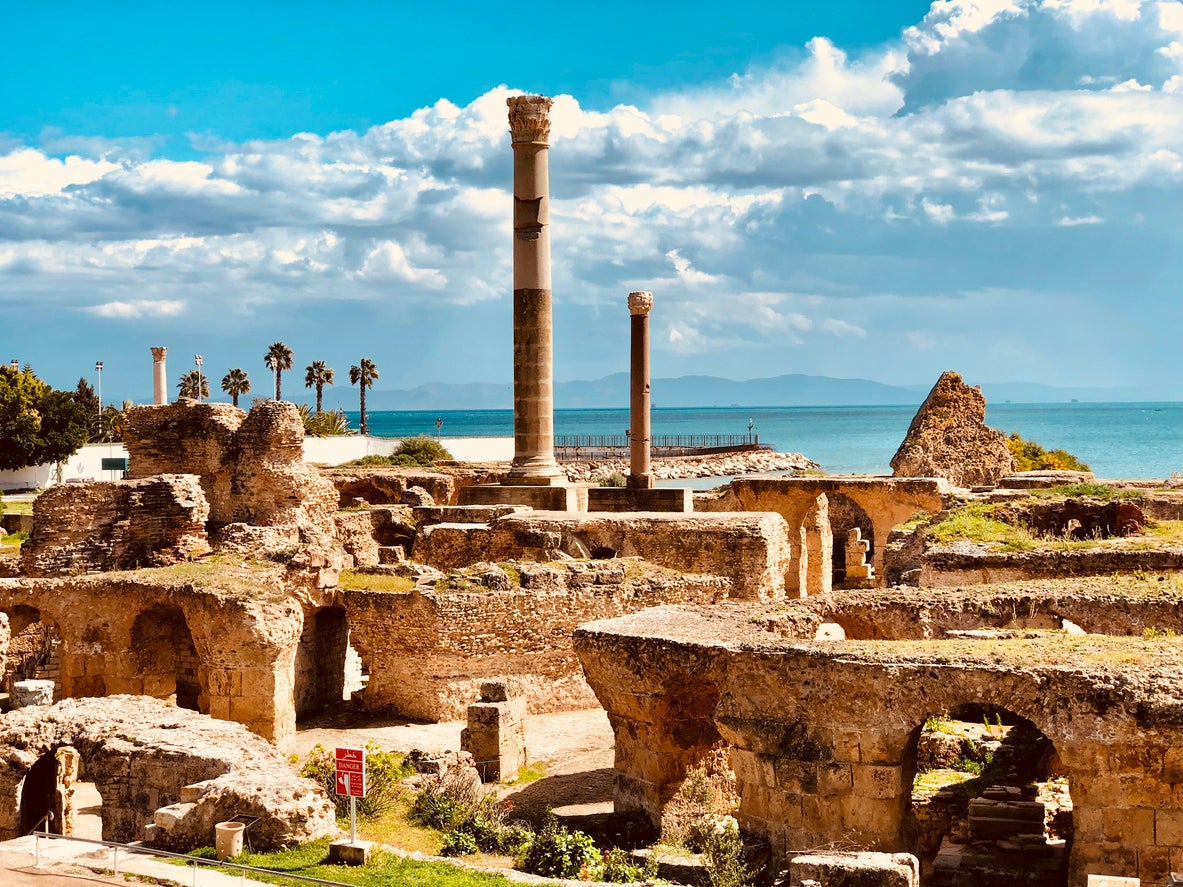
Tunisia was once an important part of the Phoenician and Roman civilisations, and several sites in the country attest to its ancient importance. The most prominent is Carthage, once a grand rival to Rome but was eventually conquered and levelled by the Romans.
Today, few remnants of Punic Carthage remain, though visitors can see the tombs at the Sanctuary of Tophet, the Punic Ports and some Carthaginian houses. There are more extensive ruins of Roman constructions, including villas, public toilets and the Antonine Baths, at the time the largest baths outside of Rome. At the top of Byrsa Hill sits the Carthage Museum, housing a collection of items that have been found during excavations and date back to the 4th century BC.
A couple of hours south of Carthage lies El Jem, another important Roman settlement that is now a town of just 21,000 inhabitants. Though only one ruin remains, it’s an important one: the El Jem amphitheatre, a 3rd-century construction that could hold 35,000 people in its heyday. Described by Unesco as an example of Roman architecture “almost equal to that of the Coliseum of Rome”, it has been remarkably well-preserved, with much of the original facade, seating and arched corridors still visible.
Visit an oasis
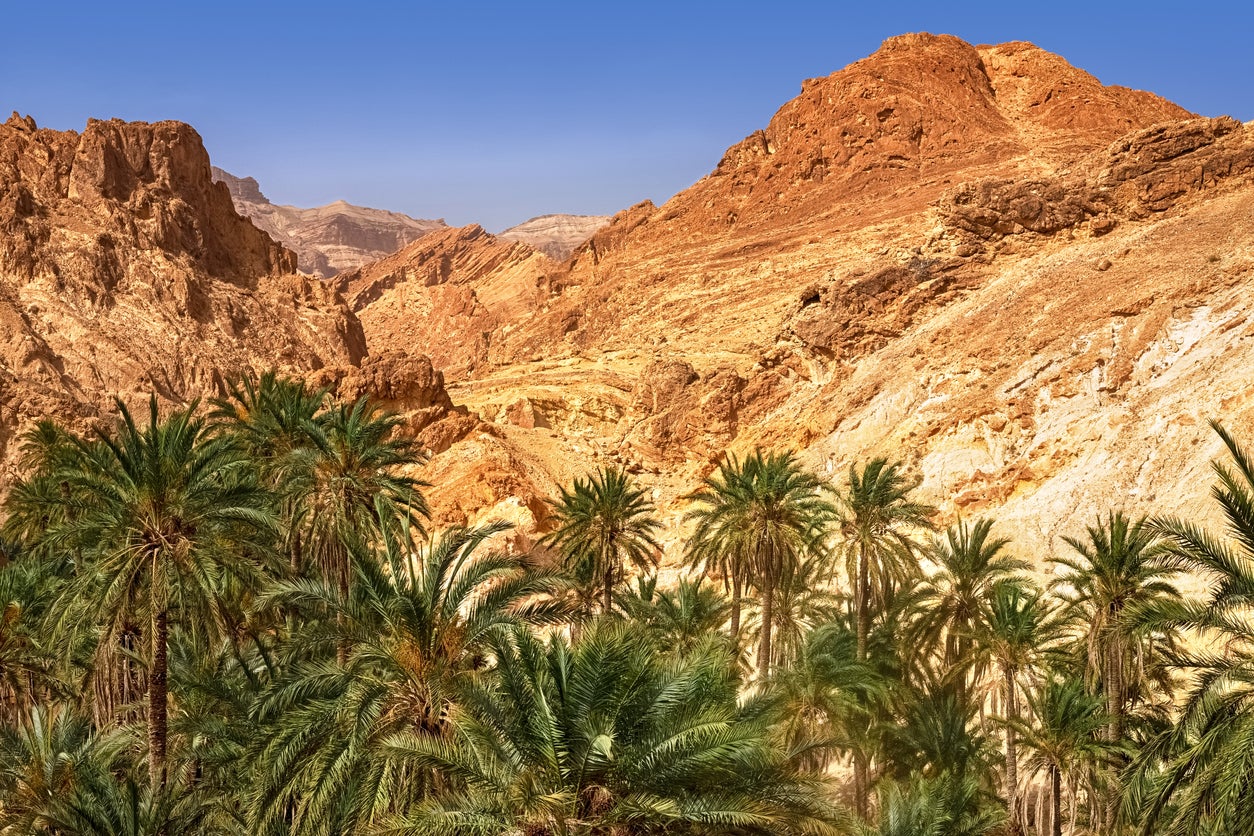
Whether it is the rising palm trees and pools of calm waters or the backdrop of arid mountains and desert, oases are among some of the most beautiful scenery in desert countries, and Tunisia is no different.
Many of the most picturesque are found in the west of the Tunisian Sahara, dotted among the mountains to the north of the city of Tozeur. Though this small city has its own verdant palmeraie area, it is best used as a base for exploring the oases of the region, like Chebika, Tamerza and Mides. Chebika is the most well-known, with dozens of palm trees punctuating the sandstone cliffs and a series of waterfalls. Tamerza is home to towering mountains and another waterfall, while Mides is known for the narrow canyons and the views of the surrounding landscape (both also have abandoned towns that you can explore). Close to Tozeur, the Corbeille oasis – in Nefta – houses a series of jagged rocks and hidden pools and lies just north of the town’s charming medina.
Explore an eclectic mix of Berber traditions and sci-fi
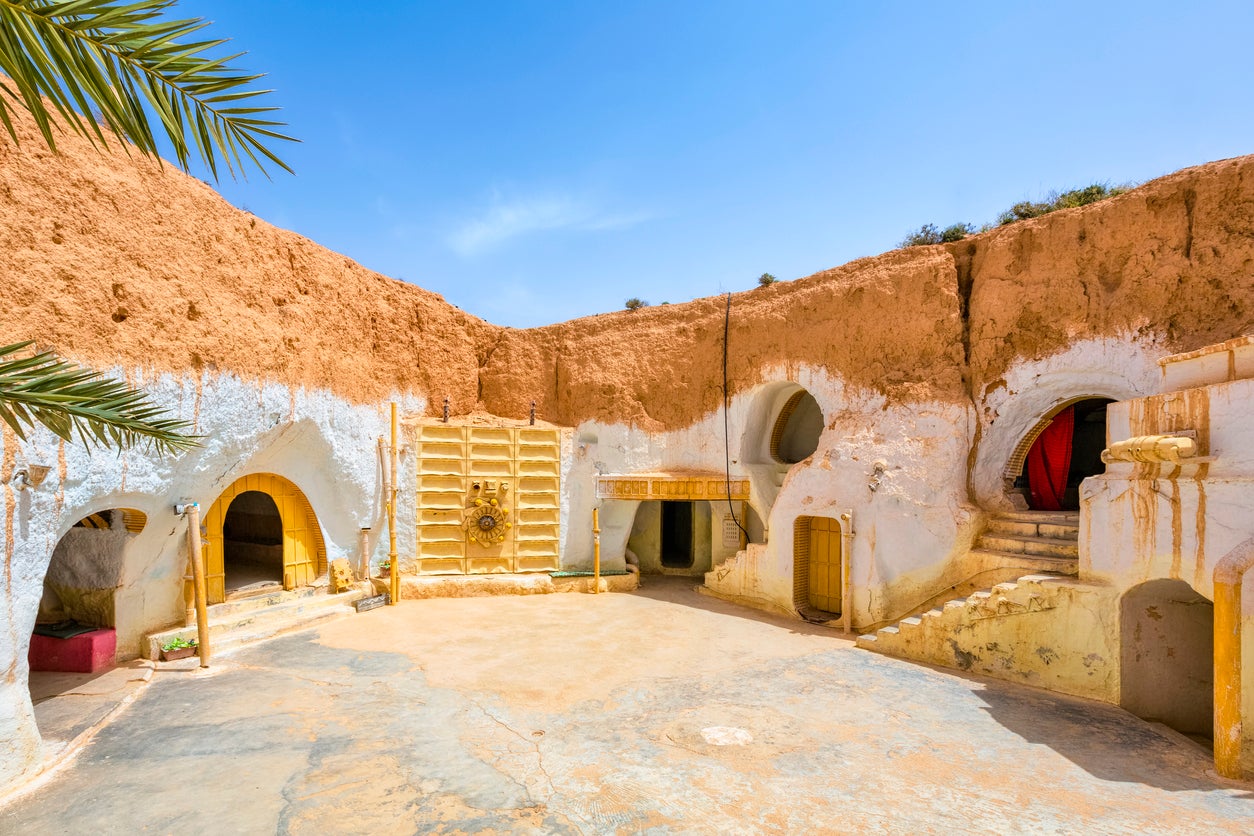
Anyone who’s a fan of Star Wars will quickly recognise the towns of Matmata and Tataouine, as well as the rugged landscapes surrounding them, as locations used in several films in the franchise. These regions are suitably otherworldly, with large desert plains interrupted only by golden rock formations and large canyons.
The towns have maintained Berber tradition and culture, from the languages used to the methods and materials used to build dwellings, and much of this is on show for visitors to see. Matmata is known for its traditional homes, dug into the rock in large pits – necessary to avoid the scorching summer sun – and interconnected with hidden tunnels. The Hotel Sidi Driss is the main attraction here, famous as the home of the Luke Skywalker.
Some of the architecture in the Tataouine region went in a decidedly different direction – this area is known for the large khours that rise up to four storeys above ground. These prominent structures, which are fortified buildings used for grain storage, are built around large courtyards and have a truly unique appearance, with those at Oued Soltane and Haddada both used as filming locations. For any movie buffs making a true Star Wars pilgrimage, the entire set that George Lucas had built for the fictional town of Mos Espa still stands near Tozeur.
See the salt lake of Chott el Djerid
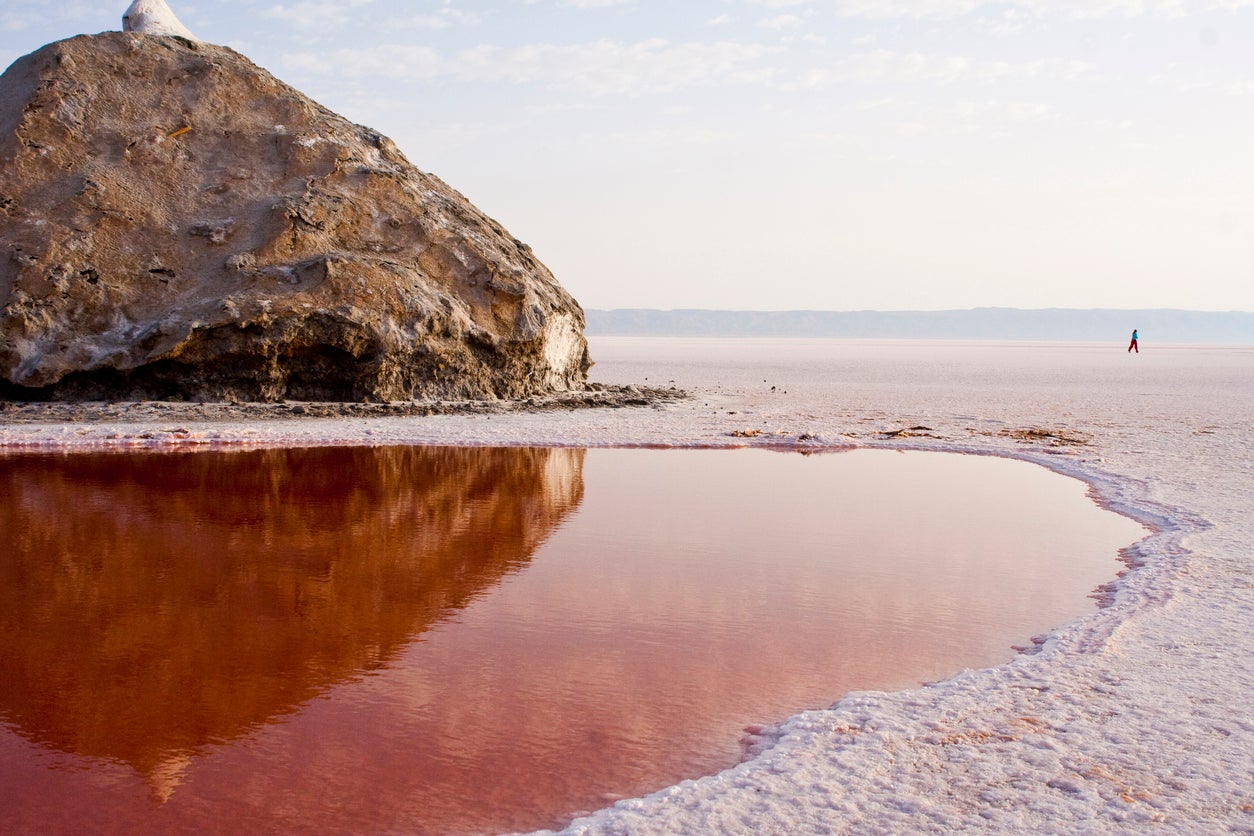
This extraterrestrial-looking salt lake was also used for a brief Star Wars scene. Measuring 160 miles across, it is often marked by many shallow lake beds that sparkle in the myriad colours of the salt deposits, though there is always some water present, varying in colour from light green to orange and a sanguine shade of red. Often traversed if travelling between the Star Wars locations and the oases near Tozeur, it can be a great addition to southern Sahara tour.
Find ancient history in Kairouan
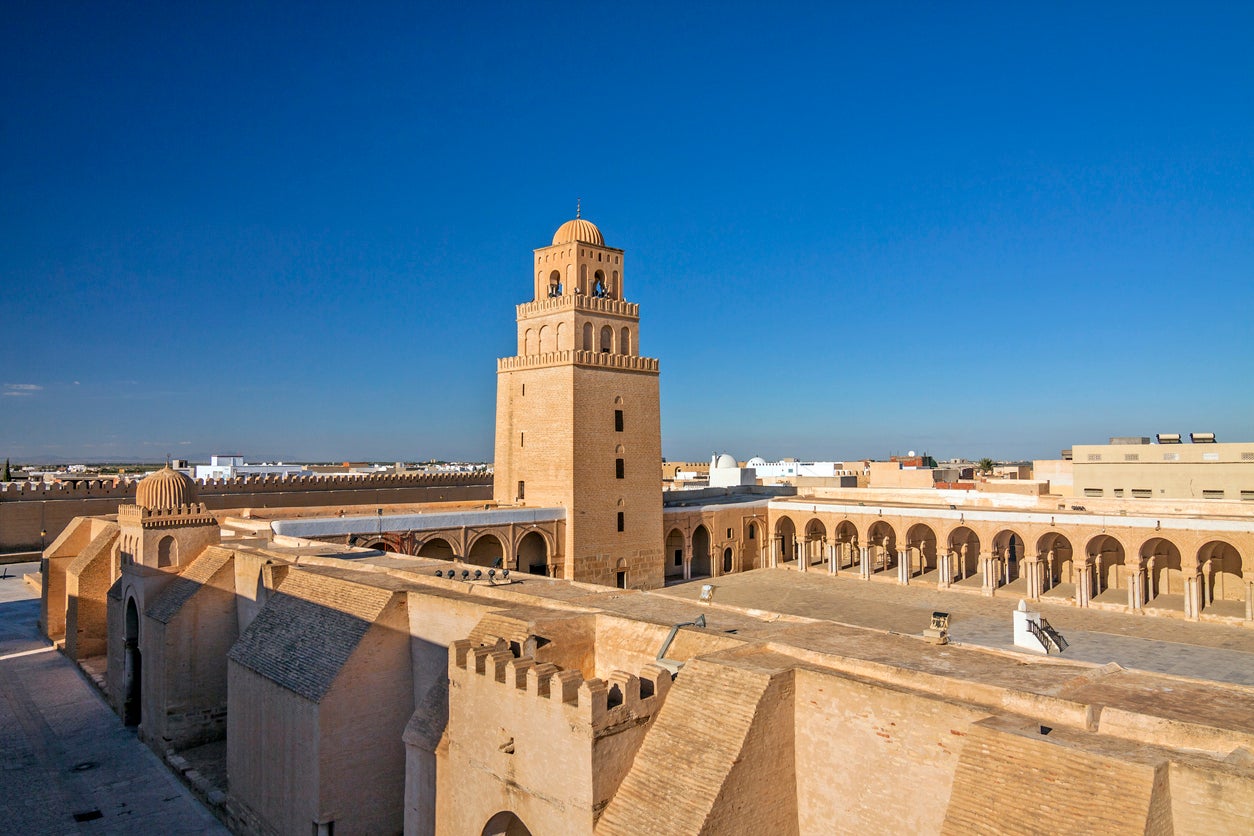
Kairouan dates back to the 7th century, and nowadays showcases Tunisia’s history and architectural heritage. The entire city is a Unesco site, and one of the main features is its medina, lined with residential streets – many containing arched walkways and blue windows or shutters – and surrounded by walls and gates dating back to the 8th century.
Long a cradle of Arab-Muslim civilisation, according to Unesco the site is so revered site in Islam that it was once said that “seven pilgrimages to Kairouan could take the place of the one pilgrimage to Mecca prescribed for all Muslims”. The main attraction is the Great Mosque, the first built in the Maghreb region across north Africa, which is referred to as “a universal architectural masterpiece” due to its impressive marble columns, porticoes and three-storey minarets. The Mosque of the Three Doors is also famous, noted for being one of the first to feature an intricately sculpted facade. Non-Muslim visitors can admire the exteriors of these buildings, but are not allowed inside.
Read our reviews of the best winter sun hotels
Join our commenting forum
Join thought-provoking conversations, follow other Independent readers and see their replies
Comments
Bookmark popover
Removed from bookmarks